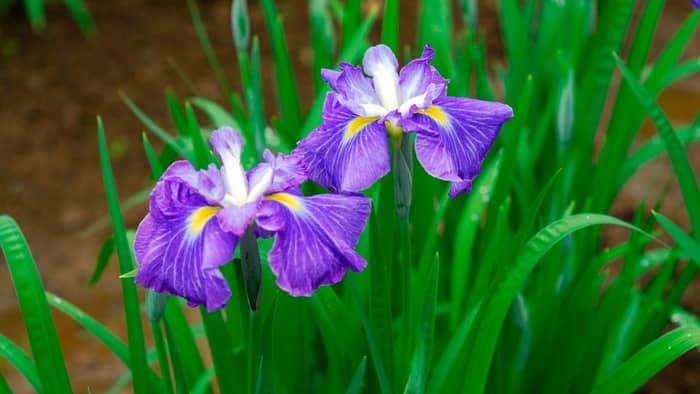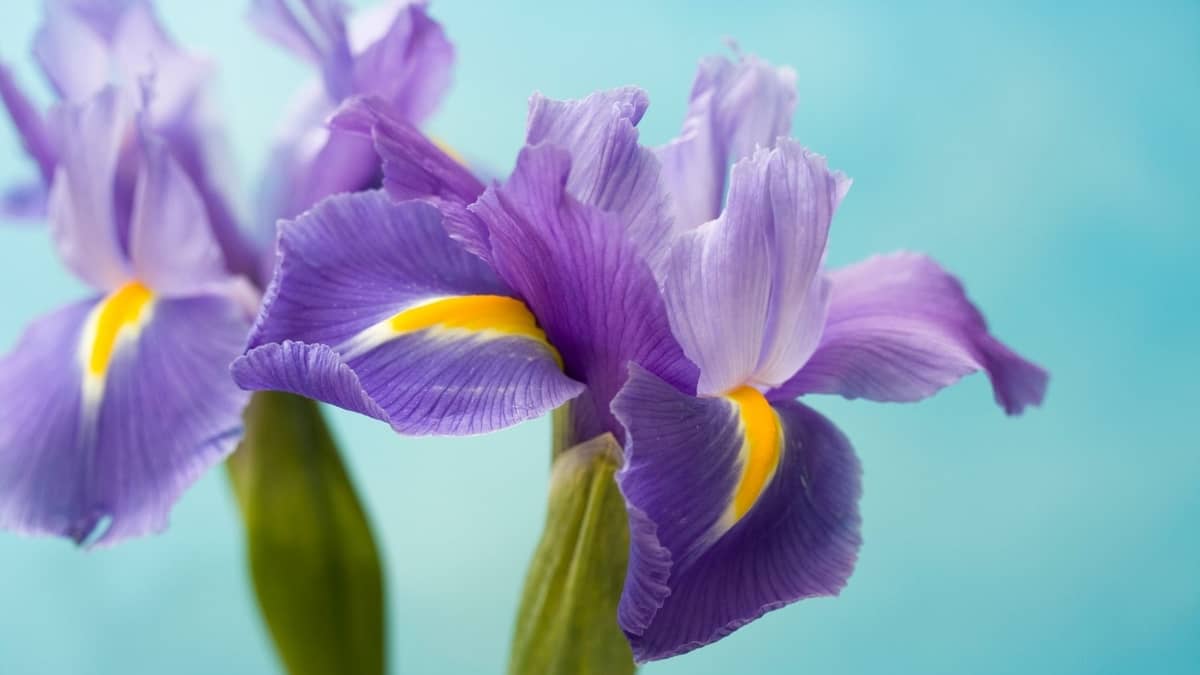Last Updated on July 31, 2022 by Griselda M.
Do irises grow in shade or do they only grow better in direct sunlight? In this article, we will look at the perfect growing conditions for these plants.
Iris Plant – What Is It And Do Irises Grow In Shade?
The Iris is a genus of perennial flowering plants in the family Iridaceae, native to temperate regions of the Northern Hemisphere and parts of tropical Africa. Iris species are commonly grown as ornamental garden plants. They may flower in the spring, summer, and autumn. The Iris family is well-known for its beautiful flowers. The iris is one of the most widely grown ornamental flowers in the world.
They can be found in many different colors, shapes, sizes, and forms. Irises have been cultivated since ancient times for their unique appearance. They are also used to make jewelry, pottery, and glassware.
The word “iris” comes from ancient Greek mythology where “Iris” was a god linked to rainbows. It is an ancient name for the flower that represents the rainbow. The flowers are produced in a wide variety of colors including blue, violet, yellow, red, white, purple, and mauve.
The iris flower is divided into three sections: the petals (the three lower petals), the two sepals (the two upper petals), and the central part called the pistil, which produces a stamen (male part of the flower) and a stigma (female part of the flower).
When the flower is closed, the two upper petals look like a “V” shape. The flower opens when it receives sunlight. Iris is an easy-to-grow perennial plant that is generally tolerant of both wet and dry conditions. You can choose a species of Iris that is adapted to your local climate.
Some irises can grow in full or partial sunlight while others prefer partial shade and can be found in both natural habitats and gardens. This is a popular garden plant due to its long blooming period, attractive foliage, and large, showy flowers. The plant can sometimes flower for months on end – I have this problem outside my house! I get sick of purple after a while and want something else to flower.

Do Irises Grow In Shade And Other Key Tips
Irises are easy-to-grow plants that thrive in the perfect conditions that include:
1. Well-drained soil
Irises need well-drained fertile soil that releases the water fast but remains moist at the same time. The soil needs to be slightly acidic, with a pH of 6.0 to 6.5. The pH should not be too low or too high. Irises prefer a neutral to slightly acidic pH.
2. A partially sunny area
Some irises like full sun exposure for the best growth but many thrive in partial sunlight too. Some irises such as the Crested Iris can also be grown in partial shade too. Make sure your plants are receiving sufficient light but not too much.
If you have a large window with natural light, place your irises in the window during the day and away from direct sunlight at night. So do irises grow in shade? Yes, they can grow in partial shade and sun. I have in fact seen them growing in the wild in quite dense forests.
3. Regular watering
Irises need regular watering, especially when the soil is dry. Watering your irises can be done by using either a soaker hose or by placing the plants in a large bucket filled with water. Be sure to keep the water from getting too high or too low.
4. Fertilizer
Fertilizing your iris plants can be performed using a variety of methods. You can use a garden fertilizer or you can add compost tea to the soil. Compost tea is made by adding compost to water and letting it sit for several days before you use it on your plants.
If you do decide to fertilize, remember that the fertilizer needs to be applied at least one week before the flowers begin to open.
I personally prefer my chicken cage manure. I place leaves in my chicken coop to stop flies. The chickens scratch this around and poop on it, and within a few weeks, it develops into lovely soil. Earthworms bring subsoil up and mix it into this whole mix, and then I take this and place it around the wild irises in the garden. It brings out a big flush of flowers.
5. Drainage holes in a pot
If you are growing your irises in pots, you will need to make sure that you use drainage holes in the bottom of the pot. This is in fact a rule for any plant in a pot – I am a firm believer in placing a bit of gravel or pumice in the bottom of a pot too – a one or two-inch layer just helps improve aeration, and drainage, and plant health.
These drainage holes will help the plants not drown in their water. Your irises will also need to be watered regularly.
Be sure to keep the soil moist but not soggy. Water as needed to keep the soil moist.
6. Proper air circulation
Irises also prefer good air circulation around them. Air circulation is critical for proper water and nutrient absorption and distribution throughout the plant. If air circulation is not adequate, it may cause the leaves to turn yellow or brown, the stems to become brittle and the roots to rot. You can add a fan to the pot to help circulate the air if your house has poor air circulation and high humidity. As an aside, if these conditions are present in your house, you will grow as poorly as the iris and it is time to invest in some air conditioning and humidity control.
In Summary – Can Irises Grow In Shade?
Most of the time, an iris does not need much care at all – just partial sunlight and a proper environment. When it is time for planting, you simply dig a hole and plant the bulbs. The bulb will begin to grow roots at the bottom of the hole, which can be planted in either the fall or spring.
The information above clearly answers the question – do irises grow in shade. This helps you plan ahead where to plant your irises and what conditions to provide for them.
Read more about How Deep Do You Plant Iris Bulbs?
Frequently Asked Questions
Where do Irises grow best?
Iris sibirica ‘Garnet’, ‘Red Sunset’ and ‘Pale Sunset’ are all hardy in full sun to light shade. ‘Garnet’ is hardy to Zone 4 (USDA Hardiness Zone Map). They prefer slightly acidic soil.
How much light does an iris need?
An iris needs about 6 hours of sunlight per day but can tolerate as little as 3 hours. The ideal conditions for most irises are full sun, with partial shade in the late afternoon. This will reduce the risk of disease.
What climate do irises grow best in?
Iris sibirica ‘Garnet’ and ‘Red Sunset’ are hardy in USDA Zones 3 ‘Pale Sunset’ is hardy in USDA Zones 3. They prefer slightly acidic soil. There are many species of iris, and you should be able to find one that can grow in your house in nearly any zone assuming you have some sort of central heating system.
What time of year is best to transplant irises?
It is best to transplant irises in late fall or early winter. Irrigate and keep them moist until you plant them out.
Caroline is a gardener who loves to get down to the nitty–gritty of gardening. She proudly proclaims herself as a ‘dirt worshipper‘ and can often be found deep in the garden, covered in soil and singing to her plants. As a self–proclaimed ‘plant whisperer‘, Caroline believes that plants need love and attention just like any other living thing, and she loves to give them both. When she‘s not tending to her garden, you can often find her researching the latest gardening trends, or teaching others how to make their gardens thrive




